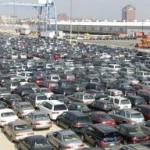Buying a new car can be exciting. But it’s also a complex process through which you can end up overpaying by hundreds or thousands of dollars or with a vehicle that you won’t be happy with down the road.
1. Falling in love with a model.
When spending tens of thousands of dollars on a car, emotion shouldn’t rule the day. Becoming infatuated with a single model can blind you to alternative vehicles that may be better for your needs or make you skimp on thoroughly researching a vehicle’s ratings, reviews, reliability, or safety and pricing information. A wide-eyed approach can also leave you more susceptible to a salesperson’s tactics to get you to pay more than you should. To determine which vehicle is best for you, you should set emotion aside and focus on doing your homework, comparing different models, and assessing your real wants and needs. There will be plenty of time for emotion after you’ve bought the vehicle.
2. Skipping the test drive.
The test drive is one of the most important parts of the car-buying process. A lot of vehicles look good on paper-especially in glossy brochure photos-but the test drive is your best chance to see how a vehicle measures up to expectations and how well it “fits” you and your family. You don’t want any surprises after you’ve bought it. That’s why it’s surprising that many people give vehicles only a token test or, worse, none at all. That is a mistake and a sure recipe for buyer remorse. It’s critical that you take ample time-at least 30 minutes-to conduct a complete test drive and perform a thorough walk-around of any vehicle you’re considering.
3. Negotiating down from the sticker price.
Don’t use the sticker price as your gauge when negotiating a deal. A salesperson may offer you a deal that’s, say, $500 below the sticker price, and many consumers will conclude, often mistakenly, that they’re getting a good deal. Unless the vehicle is in big demand and short supply, you can often get an even lower price by negotiating up from what the dealer paid for the vehicle. When you know the dealer’s true cost, you’ll know how much profit margin it has to work with and can determine a reasonable target price with which to begin your negotiations. You can calculate the dealer’s cost by subtracting any behind-the-scenes sales incentives, such as dealer rebates and holdbacks, from the dealer invoice price.
4. Focusing only on the monthly payment when negotiating.
Salespeople like to focus on a monthly-payment figure while negotiating a deal. Indeed, “How much were you thinking of paying each month?” might be one of the first questions to greet you when you meet a salesperson. Don’t take the bait. It’s the first step down a slippery slope of being manipulated with numbers and overpaying for your vehicle. Using the monthly payment as the focus, the salesperson can lump the new-vehicle price, trade-in value, and financing or leasing terms together, giving him or her too much latitude to give you a “good price” in one area while making up for it in another. Instead, insist on negotiating one thing at a time. Settle on the vehicle’s price first, then discuss a trade-in, financing, or leasing separately, as necessary. A leasing tip: Don’t bring up your desire to lease until after you’ve agreed on the vehicle’s price.
5. Buying the “deal” instead of the vehicle.
Automakers have been offering a variety of attractive sales incentives in recent years, from 0% financing and hefty cash rebates to employee-discount pricing programs. These can save you money, but it’s important to remember that any deal is only as good as the car that’s attached to it. Just because you can get a good discount doesn’t mean you should buy the vehicle. After all, you’ll be living with the vehicle for years, so make sure it’s the right one for you. Thoroughly research any model you’re considering and check our Ratings and reviews of competitive models. You may find you can get a much better vehicle for not much more money. Also check the reliability of the model. Despite an attractive discount, a vehicle with subpar reliability-and the possibility of hefty depreciation-might not be much of a bargain in the long run. A related tip: Don’t let a special incentive keep you from negotiating. Rebates and special financing are subsidized by the automaker, not the dealership. You should still negotiate the vehicle’s price as if there were no incentive. There’s no reason you shouldn’t get the best price and the incentive, too.
6. Waiting until you’re in the dealership to think about financing.
You might be a whiz at negotiating a good deal, but if you don’t choose your financing just as carefully, you could lose everything you saved on the vehicle’s purchase price, and more. A car shopper who hasn’t researched financing terms is especially vulnerable to being manipulated by the dealership. Not only do you only have the dealership’s terms from which to choose, which are often higher than elsewhere, but dealers also often mark up the interest rate of a loan over what you actually qualify for-a tactic called “interest-rate bumping.” It can cost you hundreds or even thousands of dollars more over the term of the loan. That’s why it’s critical to comparison shop for financing terms at different financial institutions and get prequalified for an auto loan before you go to the dealership to buy the vehicle. Check interest rates at banks, credit unions, or online financial sites to see which offers you the best rate. If the dealer can offer you terms that are better than what you got elsewhere, you can always choose that deal instead.
7. Underestimating the value of modern safety features.
Today’s vehicles offer an array of advanced safety features. But many buyers don’t know which are most important or what to look for when comparing vehicles. Antilock brake systems (ABS), electronic stability control (ESC), and head-protecting side air bags, for instance, are effective and well worth the money. Studies have shown that ESC can significantly reduce accidents and fatalities. The feature is especially important for SUVs, because it can help prevent rollovers. Side-crash tests show that head-protecting side air bags are critical in preventing fatalities in side impacts. Unfortunately, you can’t always depend on a dealership’s salespeople to give you accurate information or reliable guidance about these features. That’s why you should thoroughly research the benefit of all available safety features and look for vehicles that have the ones that will best protect you and your family.
8. Buying unnecessary extras.
Dealerships often try to sell you extras that boost their profit margin but are a waste of you money. They can include rustproofing, fabric protection, paint protectant, or VIN etching, in which the vehicle identification number is etched onto the windows to deter thieves. Don’t accept those unnecessary services and fees. If you see those items on the bill of sale and you haven’t agreed to them, simply cross them out and refuse to pay for them. Vehicle bodies are already coated to protect against rust. And recent CR reliability surveys show that rust is not a major problem with modern cars. You can treat upholstery and apply paint protectant yourself with good off-the-shelf products that cost only a few dollars. If you decide you want VIN etching, you can buy a kit to do it yourself for less than Ksh 2050, instead of the Ksh 16,400 that some dealerships charge. Also think twice about an extended warranty. It can cost hundreds of dollars. But if you buy a model with good reliability or if you expect to have the vehicle only for five years or less, it often isn’t worth the cost.
9. Not researching the value of your current car.
You could get a great deal on your new car but lose all of the savings-and more-on your trade-in. That’s why it’s critical that you research the value of your current car before buying your new one. Find out what both the used-car retail and wholesale prices are, so that you’ll know what you should be able to get if you trade it in or if you sell it yourself. Typically, you’ll get more money by selling it, as long as you’re willing to put in the additional effort. By knowing your vehicle’s true value and by sticking to your price during the negotiations, you can get your car’s full value, whether you trade it in or sell it yourself.
10. Not having a used car checked by an independent mechanic.
When buying a used car, condition is everything. Even the most reliable vehicle can turn into a lemon if it’s poorly maintained. Before you buy a used vehicle, have it scrutinized by a repair shop that routinely does diagnostic work. A thorough diagnosis should cost around $100, but confirm the price in advance. A good mechanic should be able to tell if the car has been in a major accident or has a hidden but costly problem. Ask for a written report detailing the car’s condition, noting any problems found and what it would cost to repair them. You can then use the report in your negotiations with the seller to adjust the price accordingly.
Adopted From: www.consumerreports.org/cro/search.htm?&page

![Top 20 Used Cars to Avoid in Kenya [PHOTOS]](../../../blog/wp-content/uploads/2013/11/nissan-370z-150x150.jpg)








